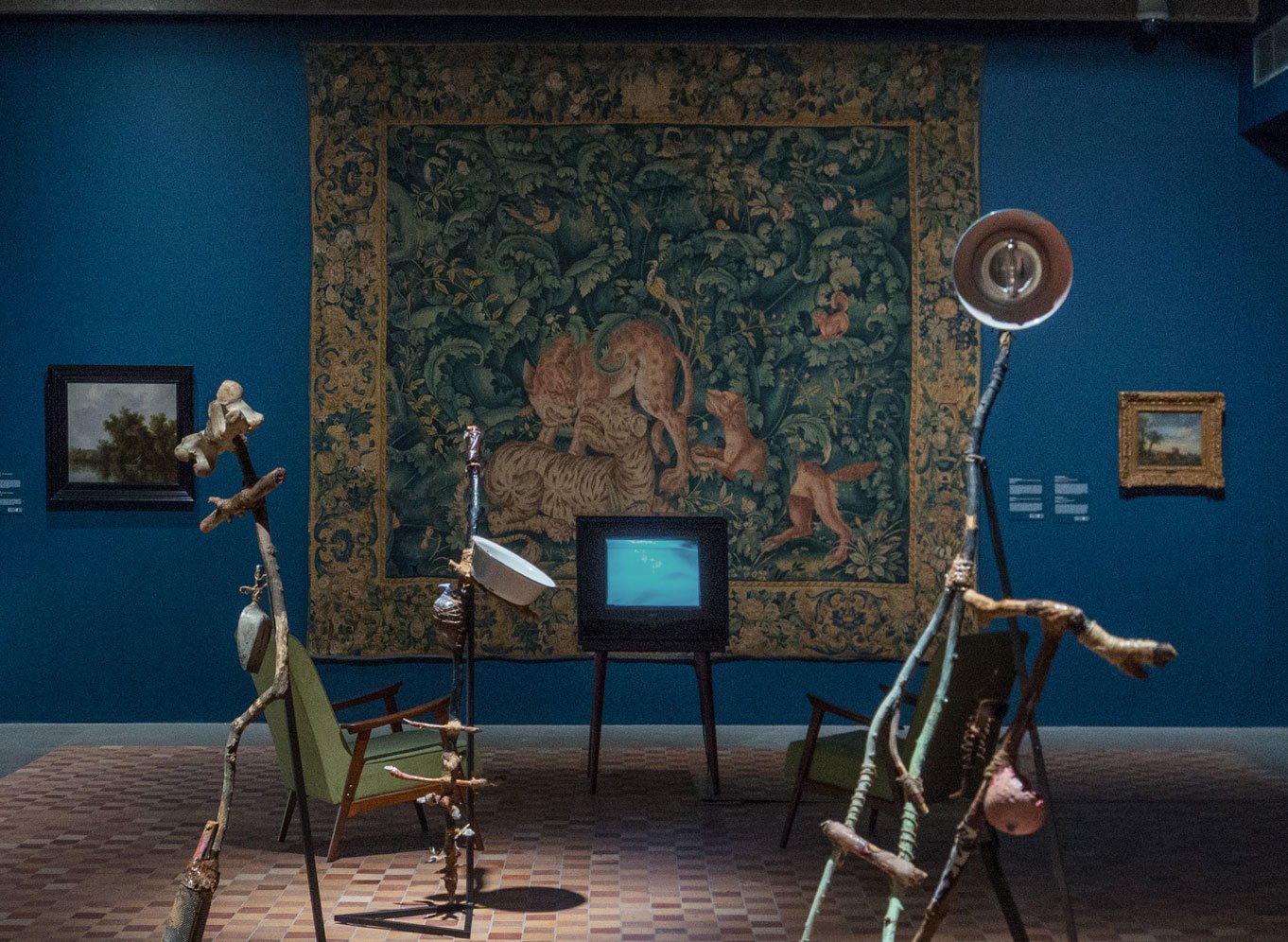Feuilles de choux tapestry

Anonymous
Feuilles de choux tapestry, Grammont Tapestry Workshop, Flanders, mid-16th century
Wool, silk, 320 x 380 cm
Private collection
The oldest work in the exhibition is a feuilles de choux (French for “cabbage leaves”) tapestry produced in the mid-sixteenth century in the town of Grammont (now Geraardsbergen, Belgium). A popular style that replaced the earlier millefleur (“thousand flowers”) tapestries, and which in fact features the leaves of a Mediterranean weed called acanthus, feuilles de choux reflected a new understanding of nature: no longer a domain of elegant things subservient to man, it was now depicted as wild world of unbridled forces beyond human control. In the context of The Coming World, this tapestry by an anonymous craftsman can be interpreted as an early and rare example of the “emancipation” of nature.
Works of art featuring animals and birds against a background of plants were called verdures (French for “greens, leaves or grass”) and the term became a synonym for this type of tapestry. This Grammont verdure features a relatively rare scene of a confrontation between two big cats, a leopard and a tiger. The two felines and a wolf that watches them may be an allegory of human passions as in Dante, or symbols of power and fierceness, as in Antiquity. In fact, historians connect the emergence of acanthus leaves in tapestries to the fashion for classical antiquity, and the grotesque mascarons hiding in the fruit and flowers framing the scene indicate this. Strange, comical, and often deliberately ugly, in Antiquity such masks pointed to the mystical and mysterious nature of our reality. During the Renaissance, they were seen as a deliberate distortion of conventional form. Their association with ancient caves (or grottos) in the fifteenth century gave birth to the notion of grotesque.